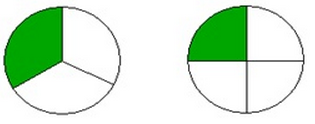Burger Math
When it comes to McDonald’s and the company’s innovations, perhaps no one deserves a mention more than the late Al Bernardin. During his decades-long association with the fast food giant — sometimes as a corporate exec, sometimes as a franchise owner — he developed many of the items still on the menu today. He’s credited with the creating the Filet-o-Fish, pushing the company to add apple pies to the menu, and pioneering the switch from fresh french fries (which had to be cut on site) to frozen ones.
Most of those were team efforts, but one other innovation was almost entirely his. In 1971, while running one of his two franchises in Fremont, California, Bernardin postulated that some customers wanted more meat for their money. His idea: a burger with a hefty beef patty — 4 ounces (or 113 grams), pre-cooked, which was more than double the size typical McDonald’s beef patty at the time. (A current Mickey D’s burger patty is about 1.6 ounces, uncooked.) He called the burger the “Quarter Pounder” and the next year, McDonald’s corporate team added Bernardin’s creation to the national menu. It’s been a trademark product of the burger chain since.
And it’s seen some competition — with, in one case, comical results. Because of the customers.
In the 1980s, A&W Restaurants — a fast food chain with 1,200 stores currently — wanted to be part of this “bigger is better” burger movement. (As an aside: the restaurant chain was originally related to the root beer of the same name and branding, and still highlights the soft drinks on its menu, but is now owned by an entirely separate company.) So A&W introduced a competitor to the McDonald’s quarter-pound offering with something called the “Third Pounder,” featuring a third of a pound of beef — an obviously superior product.
Except that the Third Pounder wasn’t so obviously superior. The New York Times explained:
With a third-pound of beef, the A&W burger had more meat than the Quarter Pounder; in taste tests, customers preferred A&W’s burger. And it was less expensive. A lavish A&W television and radio marketing campaign cited these benefits. Yet instead of leaping at the great value, customers snubbed it.
Only when the company held customer focus groups did it become clear why. The Third Pounder presented the American public with a test in fractions. And we failed. Misunderstanding the value of one-third, customers believed they were being overcharged. Why, they asked the researchers, should they pay the same amount for a third of a pound of meat as they did for a quarter-pound of meat at McDonald’s. The “4” in “¼,” larger than the “3” in “⅓,” led them astray.
Unable to overcome customers’ inability to deal with elementary-school math, A&W changed its menu. The menu still offers a burger with a third of a pound of meat, but it’s called a “Papa Burger.”
Bonus Fact: In the 1994 movie Pulp Fiction, Vincent (played by John Travolta) tells Jules (Samuel L. Jackson) that in France, they don’t call the “Quarter Pounder with cheese” by that name, because, as Vincent points out, “they’ve got the metric system” and therefore “they wouldn’t know what the [expletive] a quarter pounder is.” Vincent then explains that instead, the French call the “Quarter Pounder” the “Royale with Cheese.” It makes sense — but as Marketplace notes, that’s incorrect, as “with” isn’t a French word. In France, a Quarter Pounder with cheese is a “Royal Cheese.”
From the Archives: McHotDogs: Why it’s so rare to find hot dogs on McDonald’s menus.
Related: A “McDonalds Quarter Pounder Changeables Tranformer Robot.” As of this writing, there’s only one left in stock, and if I can talk myself into it, there will be none left in stock by the time you read this.

